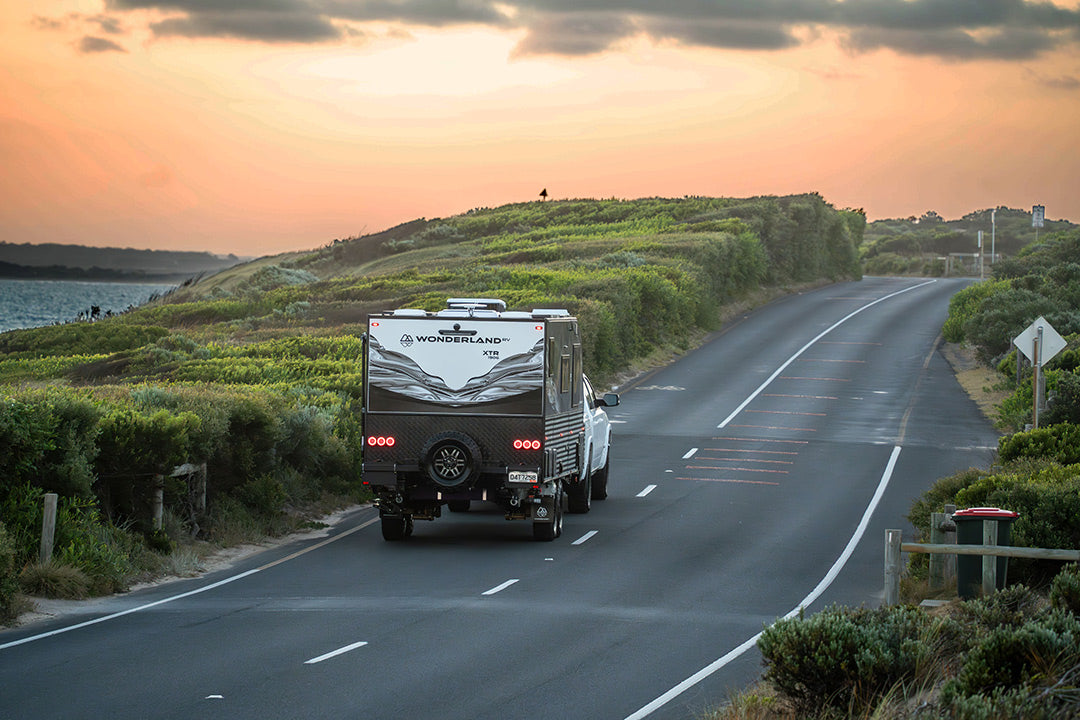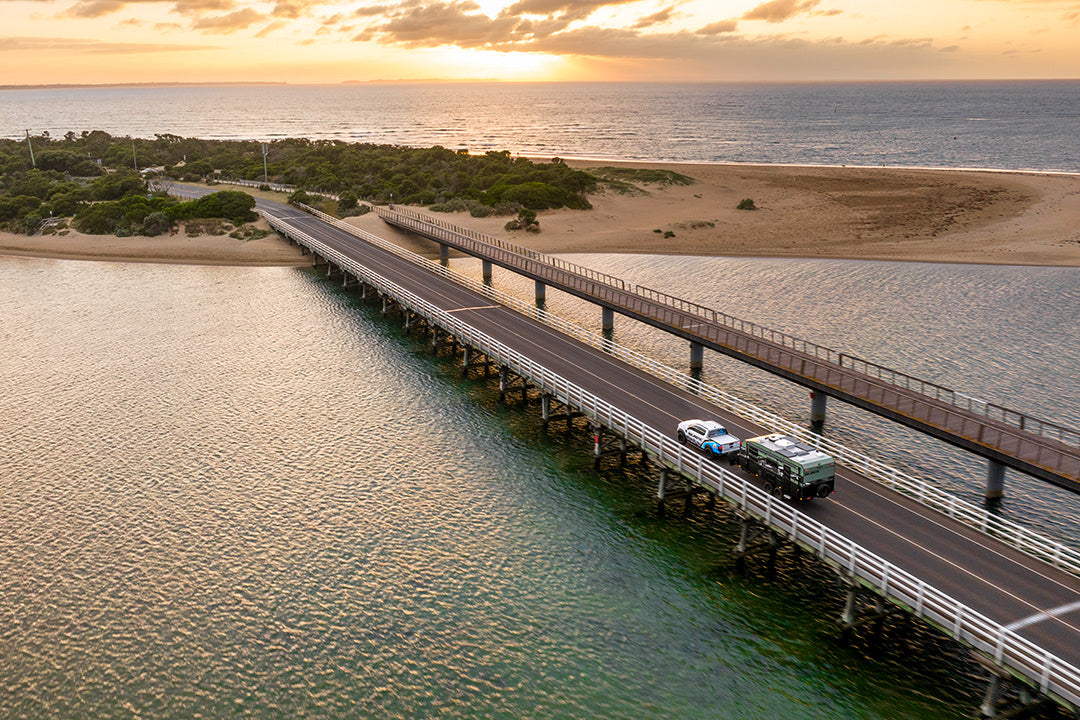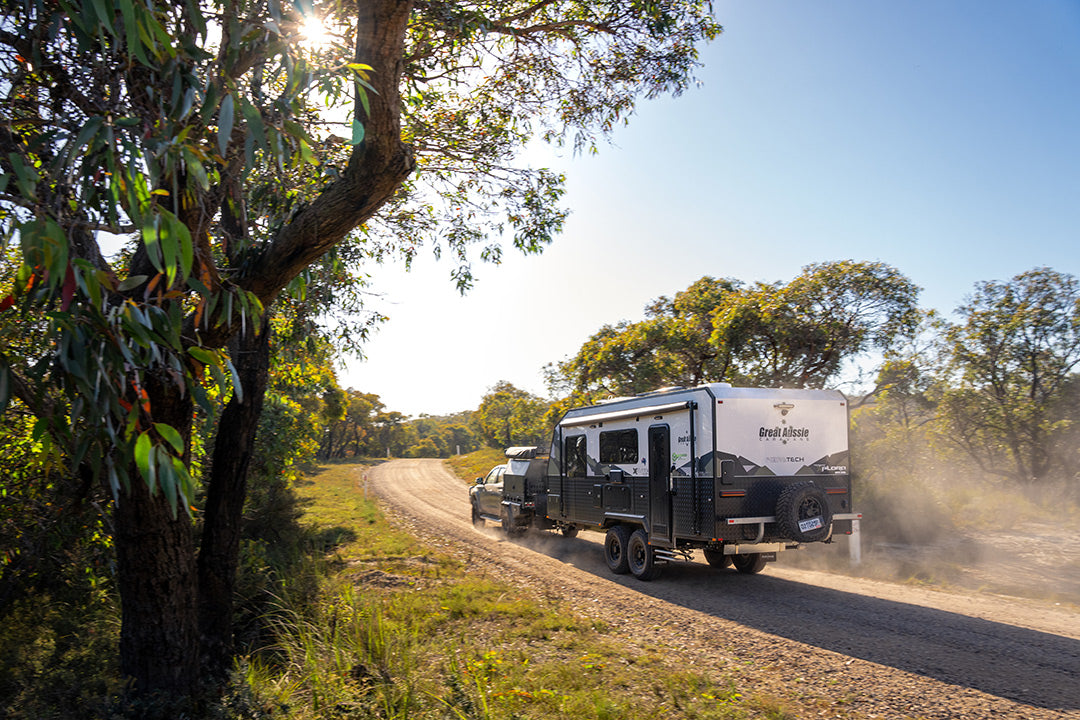Backing for Beginners: Safely reversing your van

The good news is with the right techniques and equipment it is a skill that can be mastered.
There are three key issues to overcome.
- The physical process of steering the car and van as a rig just feels “all wrong” compared to reversing a car alone.
- The caravan blocks your vision of what is behind you.
- Often there is pressure to perform, as it seems all judging eyes peer in your direction when you aim for your spot in the caravan park.
Performance Anxiety
The only pressure that exists is what you create in your own mind. Sure, spectators may be casually amused for a couple of minutes if you stuff up reversing but at the end of the day, the only thing that matters is that you end up in the spot without hitting anything or anyone. Preparation is key to minimising stress and mishaps. The first step is to have a really clear mental picture of the space you are reversing into before you start reversing. If it is a nice big open space, you may be able to take that mental snapshot as you drive up to the spot. If there is any doubt, stop somewhere safe, get out of the car and have a good look at any obstacles you need to avoid that will be difficult to see when you are in the car. This includes objects down low like taps and barriers and objects up high such as tree branches. Don’t rush anything, reversing slowly will give you time to make corrections and think clearly about what you are doing. Having a spotter to keep an eye out for things you can’t see goes a long way to taking the stress and risk out of the situation. But this only works if both parties remain calm and communicate clearly – more on that later.
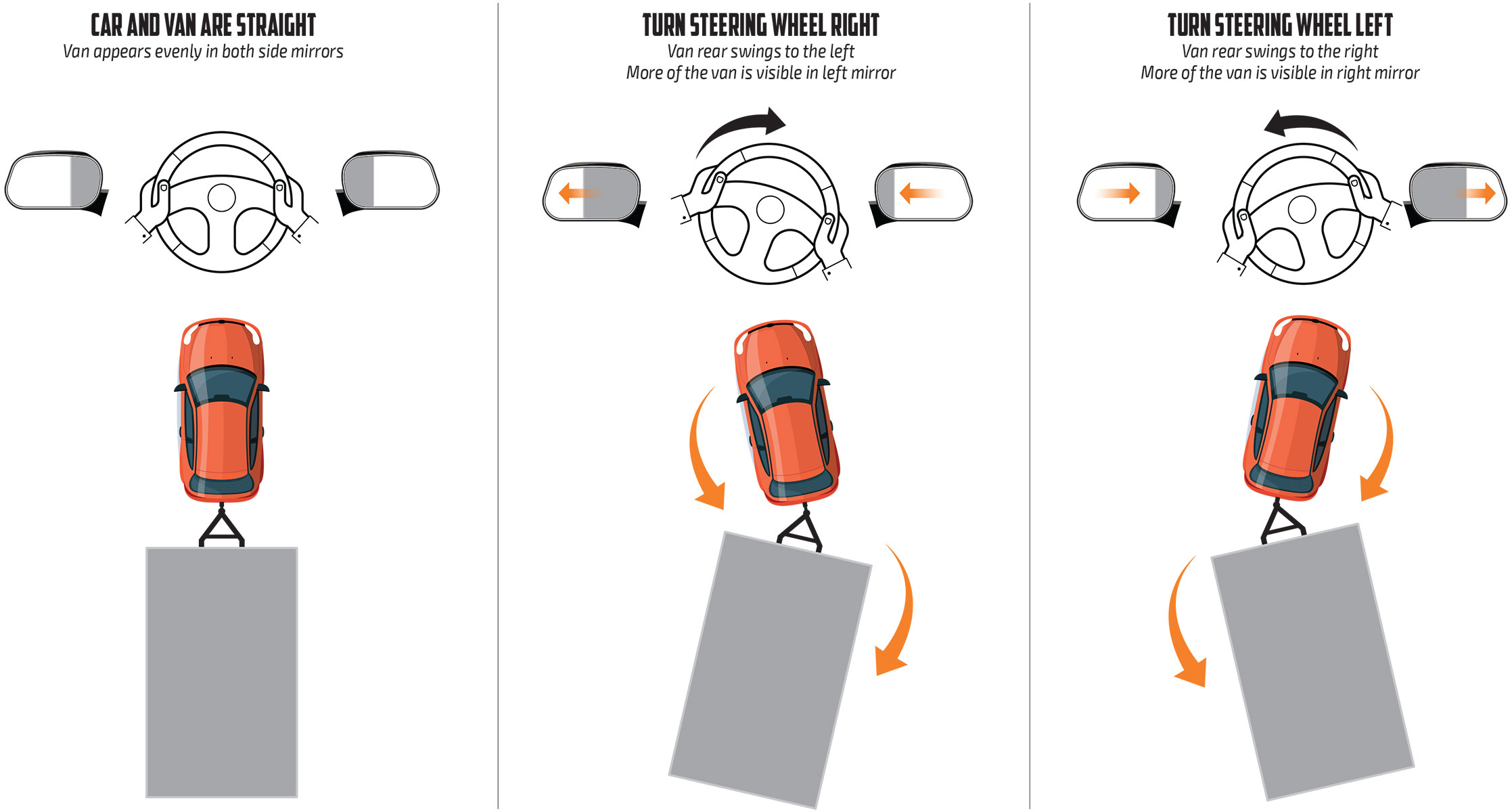
Going Backwards
So much of driving is muscle memory. We perform many complex manoeuvres without even knowing we are doing it. The challenge when learning to reverse a caravan is adding another layer to our muscle memory. When we reverse a car, if we want the back of the car to swing around to the left, we turn the steering wheel to the left without a thought. When we attach a caravan, the car still does exactly the same thing – the rear of the car still swings to the left when we steer left! The difference now is the car swinging to the left pushes the van to the right.
This is where our muscle memory lets us down. We are programmed to expect whatever we see out the back to swing in the same direction as the steering wheel. The variable we have added is a pivot point in the form of the coupling. So now we have to be reprogrammed to remember that the van we see out the back will pivot right when we turn the steering wheel left.
When I first learned to reverse a trailer, I could grasp the above concept but still found I could become a bit confused about which way to turn the steering wheel when sitting in the “hot seat”. The penny dropped for me when it was explained to me that you use the side mirrors to aid steering as well as seeing behind you. When you have the car and van in a straight line, you should see the edges of the van equally in both side mirrors. If you turn the steering wheel to the right, you will see the van swing to the left in your mirror. When you turn the steering wheel left, you will see the van swing to the right in the side mirror. Even if you are struggling to visualise what is happening, just remember (however contrary it seems) “turn right to go left” and “turn left to go right” and keep watching those side mirrors so you can see the turning happening. This one simple idea will help to build your muscle memory for reversing a van.
With all this extra stuff going on behind you it is important not to forget about the front of the car. The bonnet will be swinging to the side as you negotiate obstacles so make sure you keep glancing forward to make sure you don’t hit anything.
Jackknifing
Now that you have the idea of swinging the van to either side, the next critical concept to understand is that when you reverse too sharply for too long, the car and caravan WILL collide into each other. This is known as jackknifing and something you definitely want to avoid. With a bit of pre-planning, you can use a trick to avoid jackknifing. Ask a helper to watch you reverse sharply (and very slowly) until you almost jackknife. Ask your helper to mark a point on the van you can align with an edge of your side mirror as your “safe” parameter. Repeat this process for the other side of the van. Now you will have a future reference point for when you are approaching jackknife point.

Seeing behind you
Side mirrors are one of the key tools to seeing behind you. Standard side mirrors only allow limited rear vision behind the van. “Towing mirrors” that protrude out further than standard mirrors are a legal requirement to enable you to see the sides of van better and improve the field of vision behind you.
Mirrors are never going to see directly behind you, and this is where rear-vision cameras are fantastic. A camera is mounted on the rear of the caravan, and it sends a signal to a screen mounted in the car and bang you can see behind you. Bang being the pun because it provides great protection against accidentally reversing into something. And more importantly, a rear vision camera provides invaluable safety, providing a view of children or animals that you can’t see.
As the driver sits in the right-hand side of the car, visibility down the right side of the car is more open than the visibility down the left-hand side of the car. Therefore, where possible, it is a little easier to reverse into a spot in a caravan park when swinging the van to the right. Keep in mind though, if you are reversing directly off a busy street into a driveway, you are more likely to reverse to the left otherwise you would have to reverse across oncoming traffic.

Spotter
Even with the right gadgets, the reality is it is always easier if you have a fellow human looking out for you. Mirrors and cameras have a fixed field of vision. A spotter can look around and see what may stray into your path. Depth perception can also be a challenge with mirrors and cameras. Your spotter can be very helpful in communicating how close you are to something. Your spotter can also look out for when uneven ground will tilt the van on an angle. It’s not a problem in big open areas but in tight spaces the top of the van can tilt over far enough to hit something up high.
The key to an effective spotter is clear and calm communication. There are lots of ways to communicate with voice and hand signals. Hands-free mobile phone or radio are much better options than trying to shout from a distance. Come to an agreement on a standard set of verbal instructions and hand signals that make it easy for the spotter to convey information to the driver without confusion. When the spotter is standing at the rear of the van, it is important for the spotter to stand where they can see the driver in one of the side mirrors. If the spotter can see the driver in the mirror, then the driver can see the spotter.
Reversing into a spot
All of the above information culminates into making it easier for you to reverse into a spot. This usually involves swinging the van into a space that is at a right angle to the access path. In other words, you are making the caravan turn a corner in reverse. The first step is to drive past your parking spot until the caravan wheels are past the space you want to pivot into. If possible, position the rig across the access path so that the van is pointing as close as is practical to the direction you want to reverse the van. This means you won’t need to turn the rig as sharply and you will be able to maintain better visibility. Start reversing slowly, remembering to steer left to swing the van right and vice versa. Use small steering inputs and adjust accordingly. As the van approaches the desired angle, start to adjust the steering so the car follows the van in a smooth arc. It is very easy to oversteer at this point. No stress – just drive forward to reduce the angle and have another go.
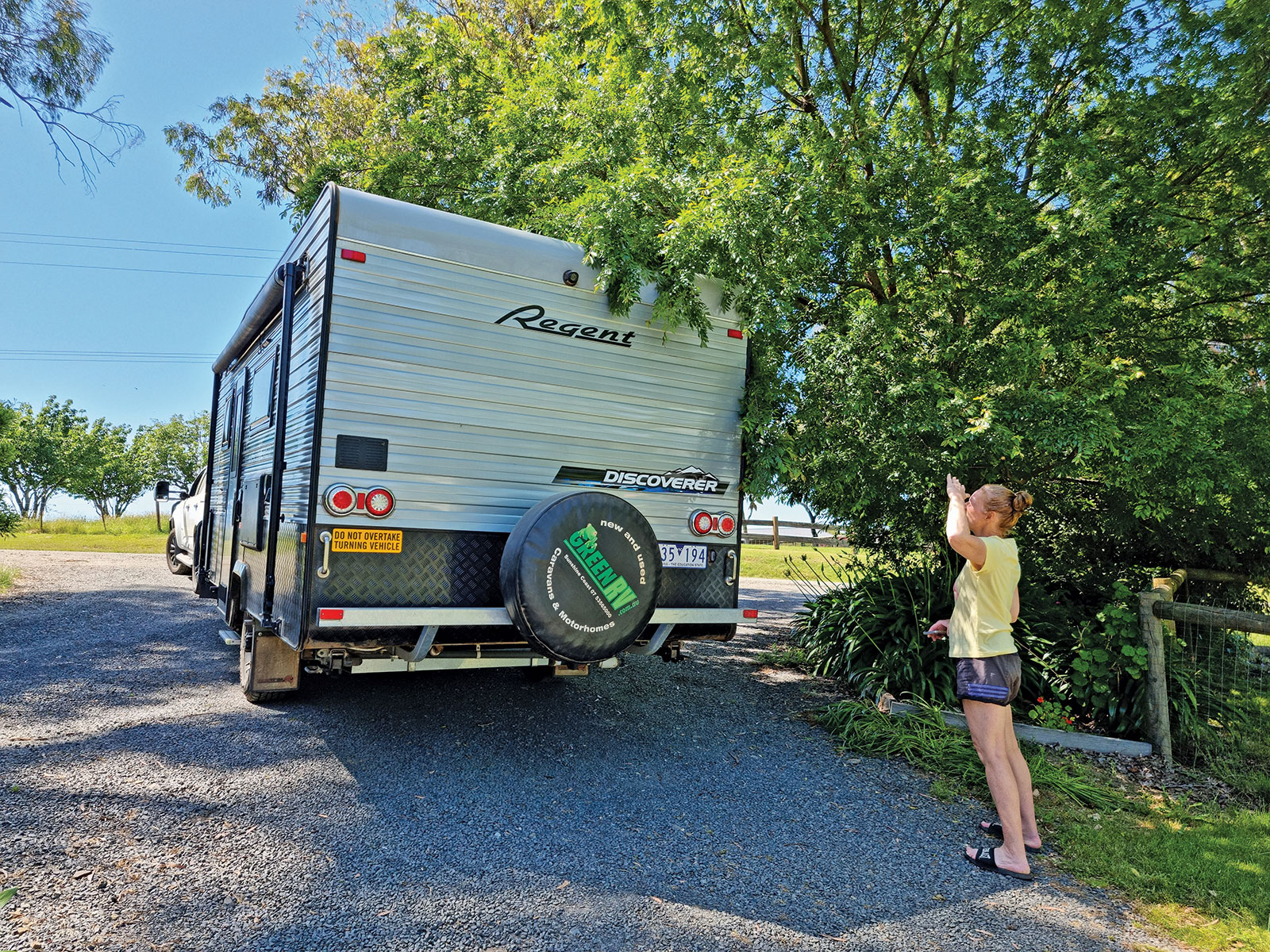
Practice
I think the last piece of advice is don’t avoid reversing scenarios. Instead, seek them out and embrace them as opportunities to refine your skill. At the beginning it is better to set up quite an open place to hone your reversing skills but as time goes by take on progressively more challenging scenarios.




